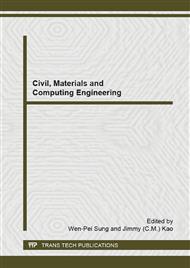[1]
D. Ye, Z. Chen. Inconsistency classication and discernibility-matrix-based approaches for computing an attribute core. In Proceedings of the 9th International Conference on Rough Sets, Fuzzy Sets, Data Mining, and Granular Computing (RSRDGrC2003), LNAI2639, 269-273. China, (2003).
DOI: 10.1007/3-540-39205-x_36
Google Scholar
[2]
R. Felix, T. Ushio. Rough sets based machine learning using a binary discernibility matrix. In Proceedings of the Second International Conference on Intelligent Processing and Manufacturing of Materials(IPMM99), 299-305. USA, (1999).
DOI: 10.1109/ipmm.1999.792493
Google Scholar
[3]
M. Inuiguchi, T. Miyajima. Rough set based rule induction from two decision tables. European Journal of Operational Research, Vol. 181, pp.1540-1553, (2007).
DOI: 10.1016/j.ejor.2005.11.054
Google Scholar
[4]
J. Wang, J. Wang. Reduction algorithms based on discernibility matrix: The order attributes method. Journal of Computer Science and Technology, 16(6): 489-504, (2001).
DOI: 10.1007/bf02943234
Google Scholar
[5]
F. Hu, G. Y. Wang, H. Huang, et al. Incremental attribute reduction based on elementary sets. LNAI3641, 185-193, (2005).
Google Scholar
[6]
D. Deng, H. Huang, A New Discernibility Matrix and Function,First International Conference of Rough Sets and Knowledge Technology(RSKT2006), Chongqing, China, LNAI4062, 114-121, Springer-Verlag Berlin Heideberg, July (2006).
DOI: 10.1007/11795131_17
Google Scholar
[7]
G.Y. Wang. Rough reduction in algebra view and information view. International Journal of Intelligent Systems, 18(6): 679-688, (2003).
DOI: 10.1002/int.10109
Google Scholar
[8]
G.Y. Wang, J. Zhao, et al. Theoretical study on attribute reduction of rough set theory: in algebra view and information view. In Proceedings of the Third International Conference on Cognitive Informatics(ICCI2004), 148-155. Canada, (2004).
DOI: 10.1109/coginf.2004.1327470
Google Scholar


